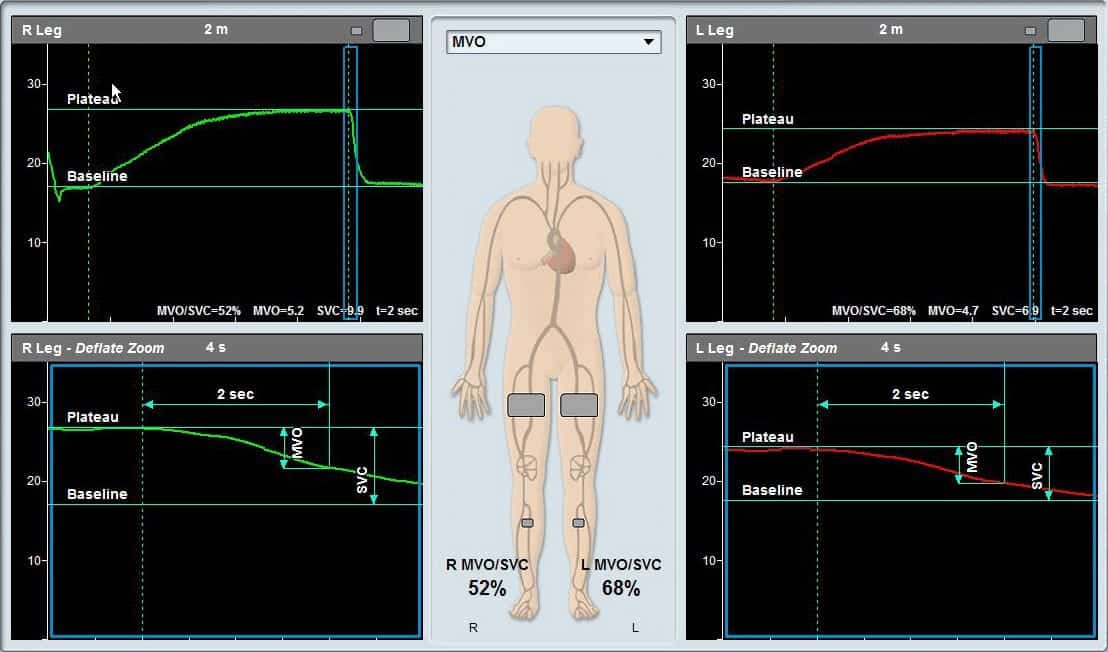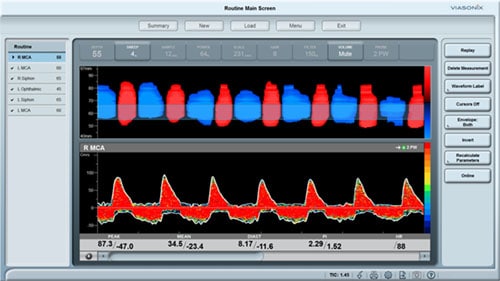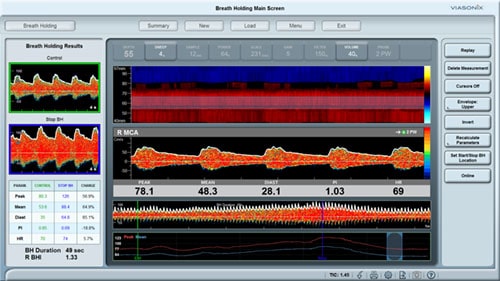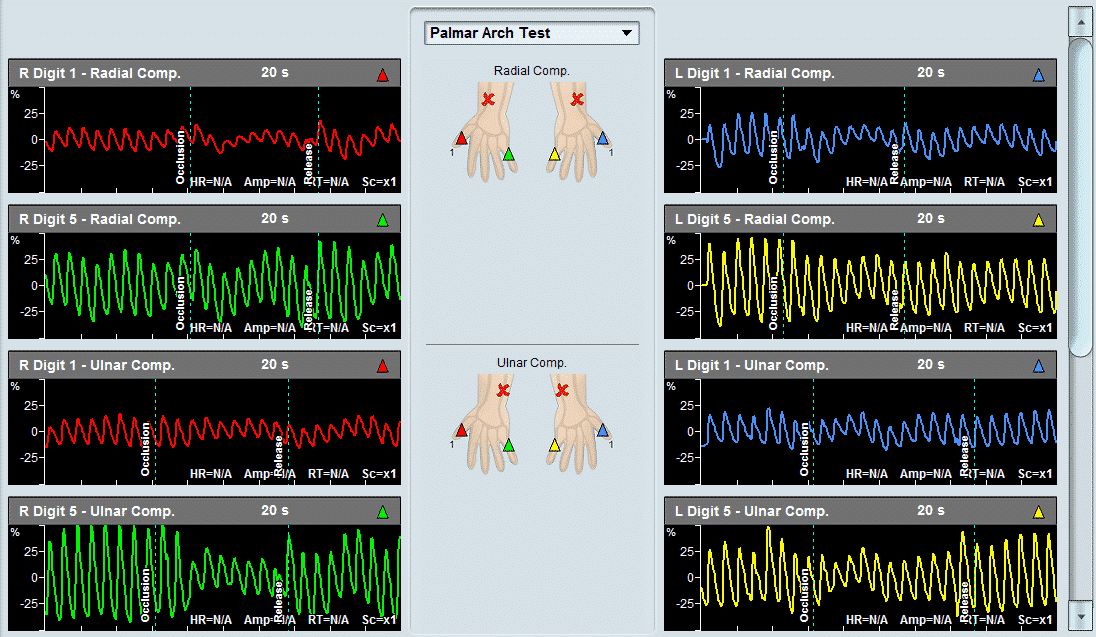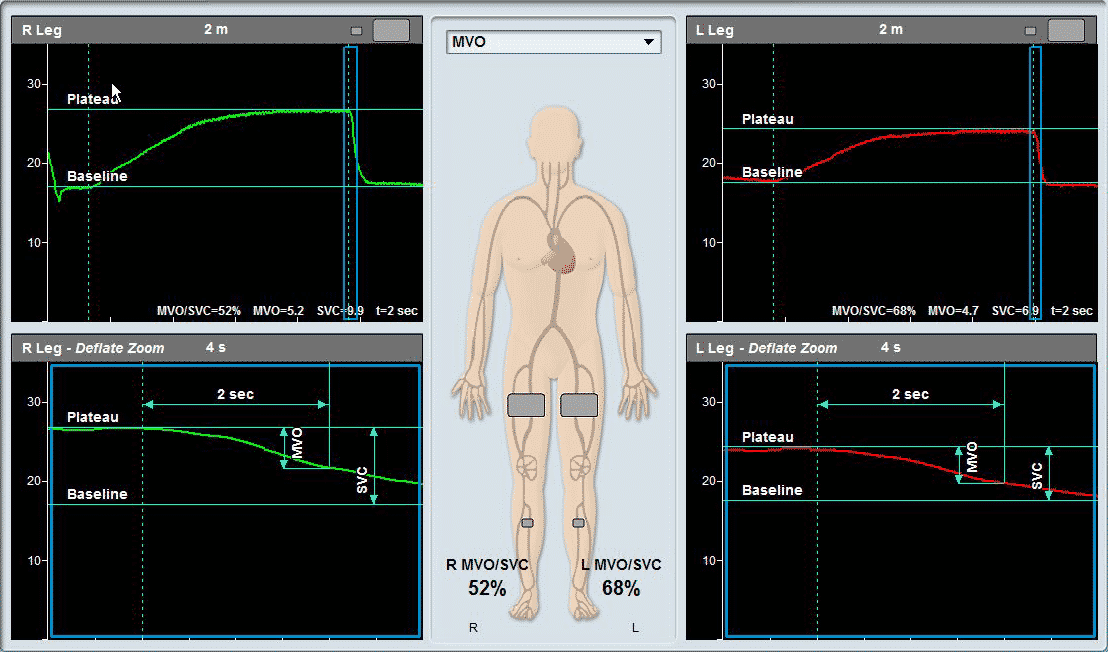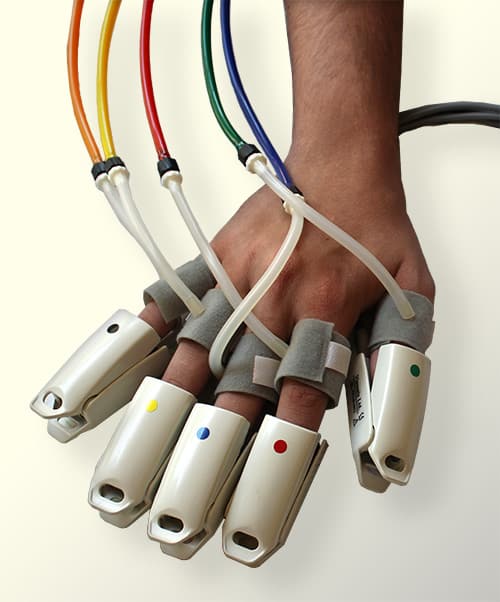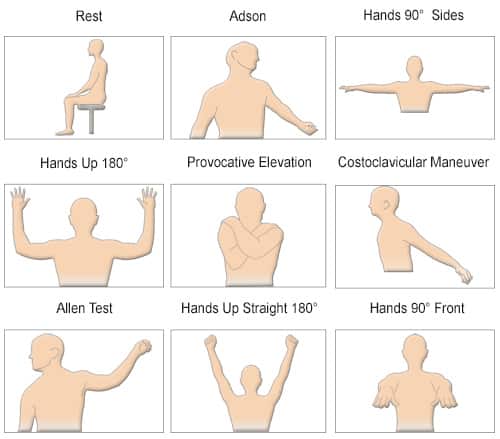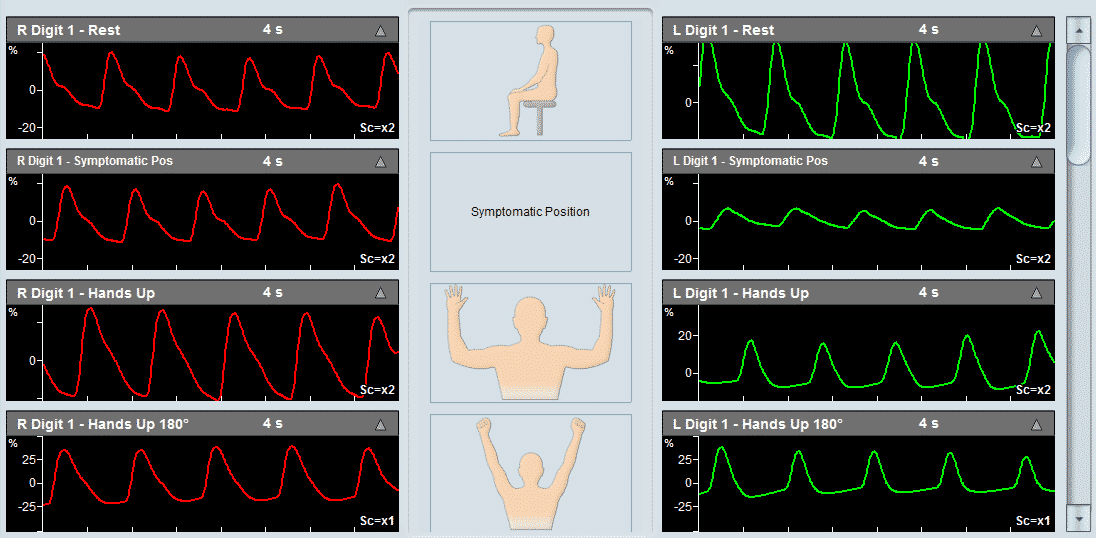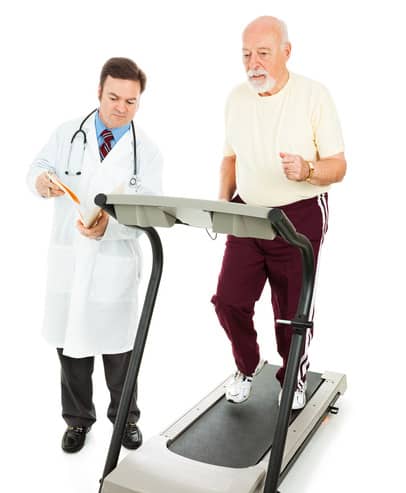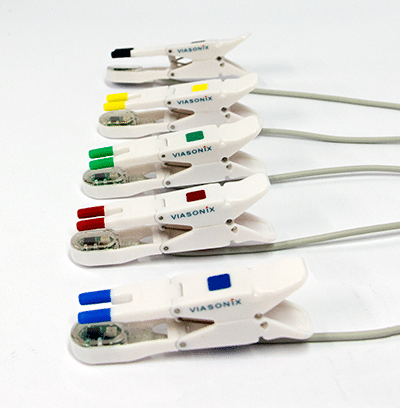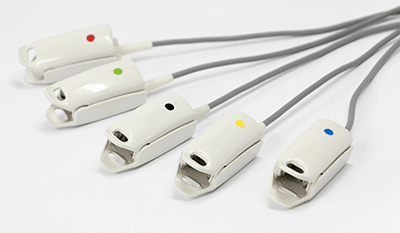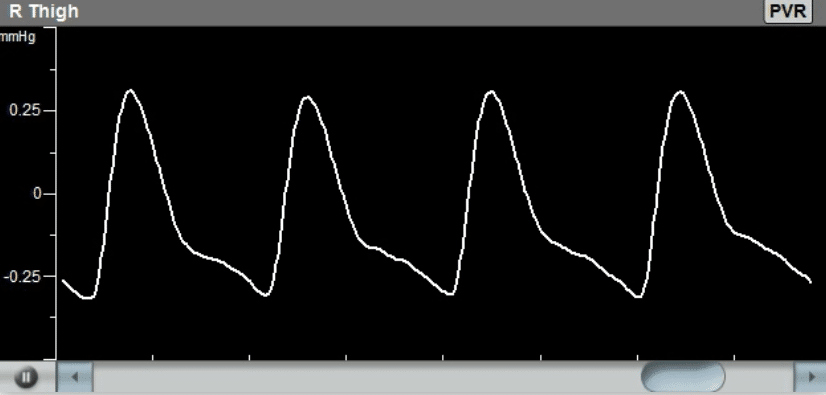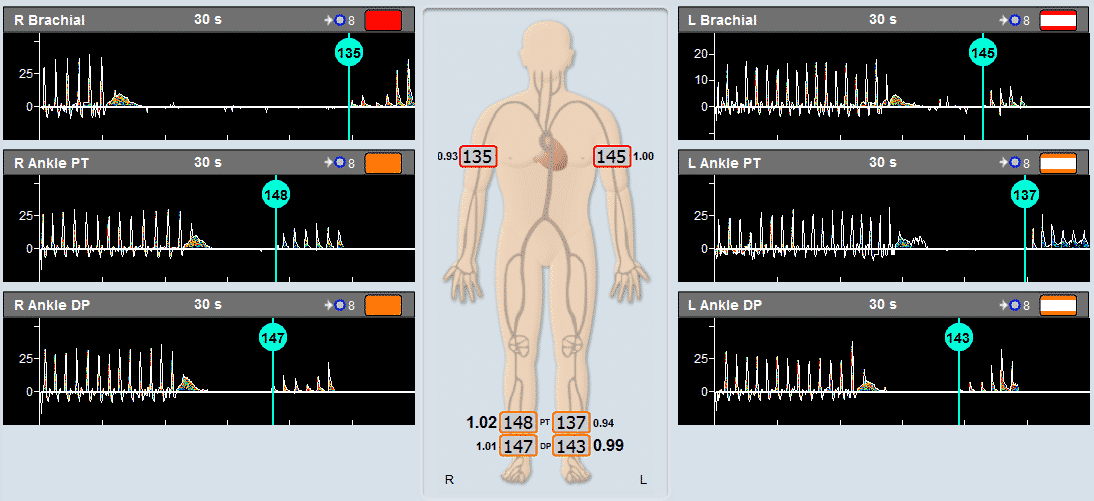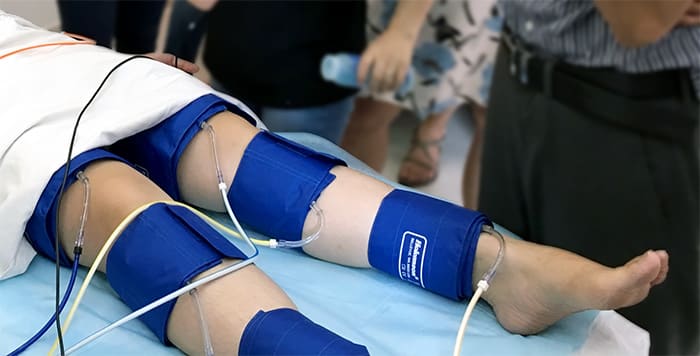What is MVO/SVC?
The MVO/SVC test (Maximal Venous Outflow / Segmental Venous Capacitance) is a specific functional physiological lower limb venous test that helps diagnose obstructions to the venous circulation in the legs.

How to Perform MVO/SVC Test
The MVO/SVC test is quite simple and aims to determine the existence of venous outflow obstruction in the lower limb. The patient lies in a supine position with the legs slightly elevated. One pressure cuff is wrapped around the thigh, and a second pressure cuff is wrapped around the calf. The thigh cuff serves for venous circulation occlusion (inflated to about 60 mmHg), while the cuff that is placed around the calf is inflated to low pressure (around 20 mmHg) and serves as a sensor to detect limb circumference changes as a result of venous blood accumulation or emptying.
When the thigh cuff is inflated to venous occlusion pressure, the venous blood starts to accumulate in the lower leg, and the sensor cuff starts to show an increase in pressure.
The pressure steadily increases until a steady-state baseline is reached. The magnitude of increase from control to the baseline represents the capacitance ability of the venous circulation in the leg and is called SVC, or Segmental venous Capacitance. Once a plateau is reached, the occluding thigh cuff is rapidly deflated. The pressure in the sensor cuff also rapidly returns back to the initial control levels. The magnitude of pressure fall in the calf cuff from the plateau level within a predefined time period, normally 1-3 seconds from thigh cuff deflation, serves as the MVO, or Maximal Venous Outflow.
If there is an obstruction to venous outflow, such as severe edema, then the venous emptying from the plateau level will take longer. As a result, MVO will decrease, and the MVO/SVC ratio will also decrease compared to normal values.

Inflatable Cuffs
High quality available in a variety of sizes
Using the Falcon for MVO/SVC Test
The Falcon has a dedicated MVO/SVC test protocol. This protocol guides the user throughout the various examination steps. It supports both unilateral or simultaneous bilateral measurements, as well as performing the test multiple times for improved accuracy.
Both the sensing cuff pressure and the venous occlusion pressures can be configured and defined by the examiner. In addition, Zoom in and out options in both the time scale and the waveform amplitude scale are available for improved diagnosis. Particularly, the program displays in detail the rapid deflation process and the corresponding fall in pressure.
In order to meet various institutional criteria, the Falcon allows configuration of the MVO calculation time, which can be set between 1 second and up to 5 seconds. Automatic cursors are placed once the thigh cuff is inflated and then rapidly deflated to mark the control baseline and the plateau levels, correspondingly. These cursors can be adjusted manually by the examiner.
The values of MVO, SVC, and MVO/SVC are automatically calculated and displayed separately for each leg. Alerts can be configured in order to help identify borderline circulation problems.
Expected Results
It is expected that when obstruction to venous flow in the legs exists, for example, edema, then the MVO/SVC ratio decreases. It is estimated that an MVO/SVC ratio below 50% indicates a problem.
Example of a Bilateral Maximum Venous Outflow (MVO)/Segmental Venous Capacitance (SVC) specialty test measured with Viasonix Falcon/PRO. Both legs were measured simultaneously. The top graphs show the complete measurements and the graphs below present a zoom-in on the deflation part (blue rectangle). The resulted MVO/SVC ratio is displayed on the schematic picture.
